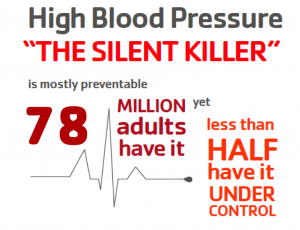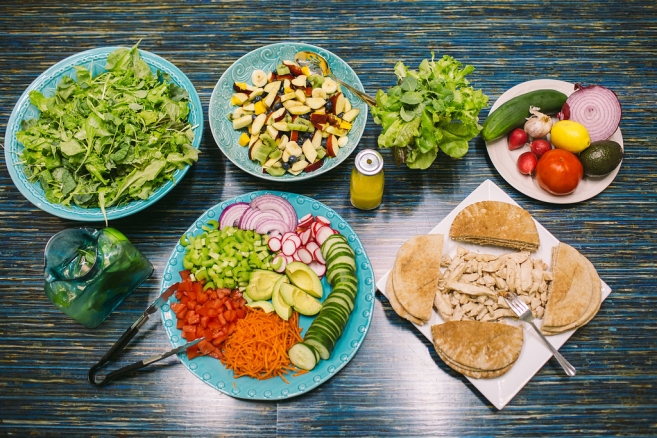End the cycle of boring lunches with these healthy-living solutions.
By the YMCA’s Sara Glenn and Kimberly Lewis for Edible Northeast Florida
Back in the day, lunch was “dinner” and dinner was “supper” because everyone went to bed at sundown. Most ate their biggest meal of the day between noon and 2 p.m., and supper was a light snack, eaten before bedtime. It wasn’t until the 20th century, with work being farther from home, when lunch became something lighter, carried with you to the workplace.
It’s a problem we tackle at the YMCA when creating healthy-living solutions for our members and the entire community. Many of the professionals we work with feel maintaining healthy eating habits at the office adds another project to their workday. However, by debunking common myths about lunch at work, eating healthy can be quick, easy and make you feel happier in the long run.
MYTH #1 – LUNCH EQUALS A SANDWICH
Growing up, your mom may have made you a sandwich in a brown paper bag, but that doesn’t mean you have to continue the tradition. Lunch could be a handful of your favorite snacks and fruits assembled in a bento box. It could be breakfast or even dinner. There is more than one way to eat a healthy lunch. Keep it interesting and pack a meal with creativity.
Today, collaborative workspaces and teams can also mean a collaborative lunch. At the Y, we select a salad day to enjoy the harvest greens from our vertical tower garden created by the SEEDifferently initiative. The team brings in their favorite salad toppings for a potluck style lunch. Lunch by teamwork means that rather than carrying an entire meal, you team up with your colleagues to complete a lunch with ingredients that you may have never tried before—it’s a good way to add variety to your plate or lunch bag.
MYTH #2 – WORK CANNOT WAIT
According to the American Dietetic Association and ConAgra Foods Foundation, 70 percent of Americans eat at their desks several times a week. In reality, you have to take care of yourself first in order to deliver the best work product.
If taking a full hour seems impossible, at least try to step away from your desk. Ask a co-worker to walk a couple of blocks with you and pick up a veggie burrito or a bowl of pho to break up your work day while getting physical activity. An active lifestyle can lead to healthier eating habits. When you have to stay in for lunch, eat in the break or conference room with others, where you can share conversations, which also encourages us to choose healthier options and eat less.
MYTH #3 – YOU MUST PLAN AHEAD
Planning ahead is a common recommendation for almost any situation, but we know that it simply does not always happen. As working parents or professionals, we often do not have the time to plan and prepare for our own lunches. However, juggling family, friends and work schedules does not mean that we are trapped into eating French fries and a hot dog.
As healthy eating becomes a higher priority in today’s world, many convenience stores now carry more than candies and sodas; fresh fruits, protein bars and healthy options may be only a few steps away from your office. Local delis usually offer specialty items that differ from day to day. Even with your last-minute decisions, healthy choices can be found around the corner.
MYTH #4 – EATING HEALTHY IS BORING
Healthy doesn’t have to mean eliminating your options. In fact, healthy meals feature a variety of food types. Keep a balanced plate in mind. Visualize it—half your plate should be fruits and vegetables, one quarter of the plate should be protein and one quarter should contain starch/grain. Right there you have four opportunities to create an exciting lunch.
Instead of eating a plain chicken sandwich on a whole-wheat bun, add a slice of pineapple. Try to replace the ketchup and mustard with teriyaki sauce and a crunchy piece of lettuce to add texture. One small change can enhance the flavor, interest and overall experience of your meal.
Now that we’ve debunked some popular myths, it’s time to figure out what works for you. Consider what you need in order to plan ahead, think about when it makes sense to grab lunch with a colleague and determine how you can up your lunch game with healthy yet tasty foods that will not only bring you lasting energy, but also a more productive mind.
RECIPE FOR A HAPPIER WORK LUNCH
End the cycle of boring lunches with these healthy-living solutions. By the YMCA’s Sara Glenn and Kimberly Lewis for Edible Northeast Florida Back in the day, lunch was “dinner” and dinner was “supper” because everyone went to bed at sundown. Most ate their biggest meal of the day between noon…







 Sara Glenn is the Director of Strategic Development of Healthy Living Innovations: Nutrition & Obesity for the YMCA of Florida’s First Coast and leads the Y’s nutritional services, including the vertical garden initiative, SEEDifferently.
Sara Glenn is the Director of Strategic Development of Healthy Living Innovations: Nutrition & Obesity for the YMCA of Florida’s First Coast and leads the Y’s nutritional services, including the vertical garden initiative, SEEDifferently.



